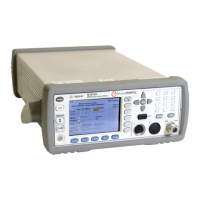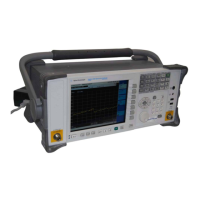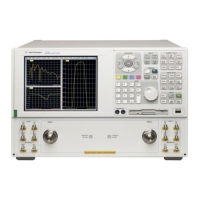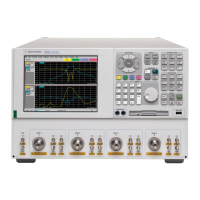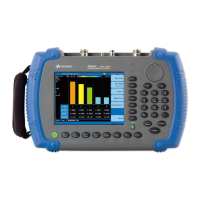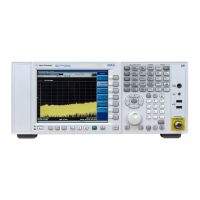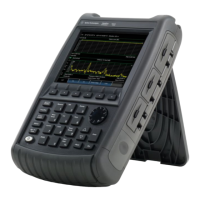Power Meter Remote Operation 1
N1911A/1912A P-Series Power Meters Programming Guide 67
Using the Operation Complete Commands
The *OPC? and *OPC commands allow you to maintain synchronization
between the computer and the power meter. The *OPC? query command
places an ASCII character 1 into the power meter’s output queue when all
pending power meter commands are complete. If your program reads this
response before continuing program execution, you can ensure
synchronization between one or more instruments and the computer.
The *OPC command sets bit 0 (Operation Complete) in the Standard Event
Status Register when all pending power meter operations are complete. By
enabling this bit to be reflected in the Status Register, you can ensure
synchronization using the GPIB serial poll.
Procedure
• Send a device clear message to clear the power meter’s output buffer.
• Clear the event registers with the *CLS (clear status) command.
• Enable operation complete using the *ESE 1 command (standard event
register).
• Send the *OPC? (operation complete query) command and enter the
result to assure synchronization.
• Send your programming command string, and place the *OPC
(operation complete) command as the last command.
•Send the *STB? (status byte query) command to poll the register. This
command does not clear the status byte summary register.
In GPIB mode only you can use a serial poll to check to see when bit
5 (standard event) is set in the status byte summary register. You could
also configure the power meter for an SRQ interrupt by sending *SRE
32 (status byte enable register, bit 5).
Examples
This example program uses the *OPC? command to determine when the
For LAN and USB use the *STB? command. See “Using *STB? to Read the Status
Byte” on page 60.
